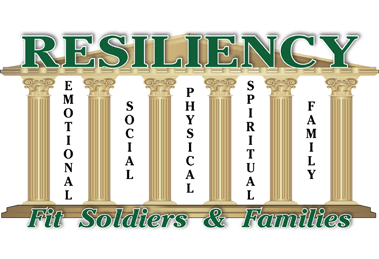Resilience drives Personal Readiness. In order to sustain personal readiness, we must understand the relationship among its five dimensions, sometimes called pillars: Physical, Emotional, Social, Spiritual, and Family. Sustaining healthy behaviors within and across these dimensions is essential to achieving and sustaining personal readiness.
MRT’s with assistance from RTAs can provided focused training on:
Mindfulness: Mindfulness is a mental training technique focused on learning how to stay in the present moment, notice thoughts and emotions, and accept them as they are without judgment. Instead of judging an emotion like anxiety as "bad" and trying to change it, just notice that you're feeling anxious, embrace that it's a normal part of life, and re-direct your attention back to the present moment. Research shows that practicing mindfulness on a consistent basis leads to better emotion regulation, mood, sleep, performance, and focus.
Mental Skills Foundation: Have you ever heard someone say something like, “I’m awful at school” that either prevents them from enrolling in classes or negatively impacts their performance in a course? Have you heard someone vent about how running isn’t their thing? Your beliefs about your ability to grow and improve can either set you up to reach your full potential or cause you to plateau early. You can learn to identify how your beliefs may be holding you back and how to get your thoughts to start working for you, rather than against you.
Building Confidence: If you have ever struggled to approach a situation with confidence, like giving a brief to leadership, qualifying with your weapon, taking a course, or passing the ACFT, Resilience training can help you learn how to build your confidence and the confidence of your team. By identifying personal strengths, learning how high performers interpret failure and success, and correcting ineffective thoughts, you can look at new challenges as an opportunity instead of a threat.
Attention Control: Peak performance requires us to put our attention in the right place at the right time. Our attention can be internal (focused on thought or sensations in the body like pain) or external (look broadly at our environment or focused specifically on a target). When you’re qualifying on your weapon, has your mind ever wandered to doubts about qualifying, an argument you had earlier, physical discomfort, weather, or noise around you? You can learn to manage distractions, identify where your attention should be, and then direct your brain there in the moment so you can set yourself up for peak performance.
Energy Management: Different performances require different levels of energy, for example, the two-mile run vs. the sprint, drag, carry. Understanding those differences allows you to prioritize what you can control and be more deliberate with how you use your energy, and how to utilize breathing techniques to help you maintain composure and maximize recovery opportunities
Goal Setting: We often set goals but then get side-tracked by other demands or can’t sustain the motivation over the long-term. Sometimes we may find ourselves in charge of assigning and overseeing tasks, but no one seems to be motivated to get the job done (or done right). You can learn research-based techniques to help coach yourself and others to sustain motivation and effort over the long term so you can meet goals.
Imagery: Frequently, there are important tasks or performances we need to execute but we don’t have the time to practice as much as we like. We are learning a new task, like one of the new elements of the ACFT, but can’t practice every day without causing harm to our bodies. Imagery is a proven technique that helps build skill, accelerate learning, and build muscle memory by running through mental rehearsals



